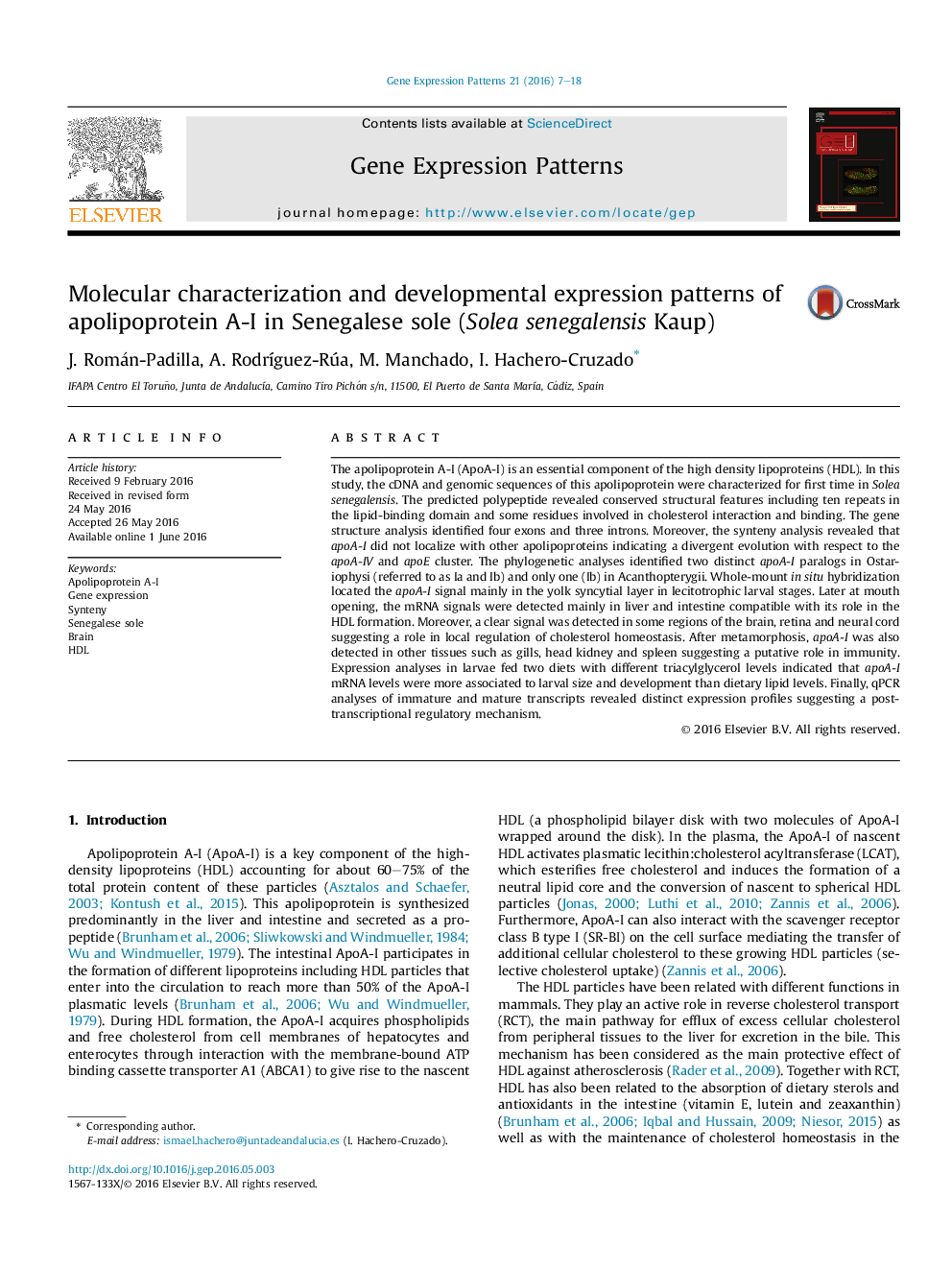| Article ID | Journal | Published Year | Pages | File Type |
|---|---|---|---|---|
| 2181808 | Gene Expression Patterns | 2016 | 12 Pages |
Abstract
The apolipoprotein A-I (ApoA-I) is an essential component of the high density lipoproteins (HDL). In this study, the cDNA and genomic sequences of this apolipoprotein were characterized for first time in Solea senegalensis. The predicted polypeptide revealed conserved structural features including ten repeats in the lipid-binding domain and some residues involved in cholesterol interaction and binding. The gene structure analysis identified four exons and three introns. Moreover, the synteny analysis revealed that apoA-I did not localize with other apolipoproteins indicating a divergent evolution with respect to the apoA-IV and apoE cluster. The phylogenetic analyses identified two distinct apoA-I paralogs in Ostariophysi (referred to as Ia and Ib) and only one (Ib) in Acanthopterygii. Whole-mount in situ hybridization located the apoA-I signal mainly in the yolk syncytial layer in lecitotrophic larval stages. Later at mouth opening, the mRNA signals were detected mainly in liver and intestine compatible with its role in the HDL formation. Moreover, a clear signal was detected in some regions of the brain, retina and neural cord suggesting a role in local regulation of cholesterol homeostasis. After metamorphosis, apoA-I was also detected in other tissues such as gills, head kidney and spleen suggesting a putative role in immunity. Expression analyses in larvae fed two diets with different triacylglycerol levels indicated that apoA-I mRNA levels were more associated to larval size and development than dietary lipid levels. Finally, qPCR analyses of immature and mature transcripts revealed distinct expression profiles suggesting a posttranscriptional regulatory mechanism.
Related Topics
Life Sciences
Biochemistry, Genetics and Molecular Biology
Cell Biology
Authors
J. Román-Padilla, A. RodrÃguez-Rúa, M. Manchado, I. Hachero-Cruzado,
